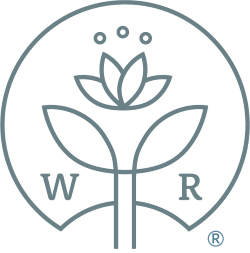Nettle (Stinging) Root
Also known as
Urtica dioica, Stinging Nettle, Common Nettle, Gerrais, Isirgan, Kazink, Ortiga, Grande Ortie, Ortie, Urtiga, Chichicaste, and Brennessel
Introduction
The common nettle comes by its other name, stinging nettle, honestly. The innocuous plant, a perennial that grows in many parts of the world and that has been naturalized to Brazil, delivers a stinging burn when the hairs on the leaves and stems are touched. Its healing properties are as well known among various cultures and are part of folklore and tradition. Those healing powers are even alluded to in at least one fairy tale, The Swan Princess, in which the heroine must weave shirts of nettle leaf to cure her twelve brothers who have been turned into swans by an evil stepmother. The nettle leaf and root both have medicinal properties, but each is more effective against different complaints. Nettle root is used as a treatment for prostate problems, including prostatitis and benign prostatic hyperplasia, a condition that affects men starting about the age of 40. Extracts of nettle root have proven effective in reducing the inflammation associated with BPF and prostatitis and even slowing the growth of abnormal cells.
Constituents
Formic acid, histamine, serotonin, choline, minerals, chlorophyll, amino acids, lecithin, carotenoids, flavonoids, sterols, tannins and vitamins. Nettle's main plant chemicals include: acetophenone, acetylcholine, agglutinins, alkaloids, astragalin, butyric acid, caffeic acids, carbonic acid, chlorogenic acid, chlorophyll, choline, coumaric acid, folacin, formic acid, friedelins, histamine, kaempherols, koproporphyrin, lectins, lecithin, lignans, linoleic acid, linolenic acid, neoolivil, palmitic acid, pantothenic acid, quercetin, quinic acid, scopoletin, secoisolariciresinol, serotonin, sitosterols, stigmasterol, succinic acid, terpenes, violaxanthin, and xanthophylls.
Parts Used
Root
Typical Preparations
Standardized extract, as a decoction, in capsules and incorporated into paste, creams and salves.
Summary
Nettle root has showed a great deal of promise in treating benign prostatic hyperplasia, a condition affecting a large proportion of men over the age of 40 that is often a precursor to prostate cancer. The current research shows that constituents of nettle root work by inhibiting the growth of abnormal cells, a property that suggests it may have some use in preventing cancer. Interestingly, the same chemicals may have an effect on hair loss, and at least one company has filed a patent for a formula containing nettle root to treat male pattern baldness.
Precautions
Because of its diuretic and hypotensive actions, nettle leaf may lower blood pressure. If you are taking diuretics or other drugs meant to lower blood pressure, consult your doctor before using nettle root. Its long term use is not recommended.
PURCHASE STINGING NETTLE ROOT EXTRACT
For educational purposes only This information has not been evaluated by the Food and Drug Administration. This information is not intended to diagnose, treat, cure, or prevent any disease.
This information courtesy of MOUNTAIN ROSE HERBS, with full, written permission for reuse. For further traditional information concerning STINGING NETTLE ROOT, please visit this excellent resource fromBotanical.com. Used with full, written permission.








